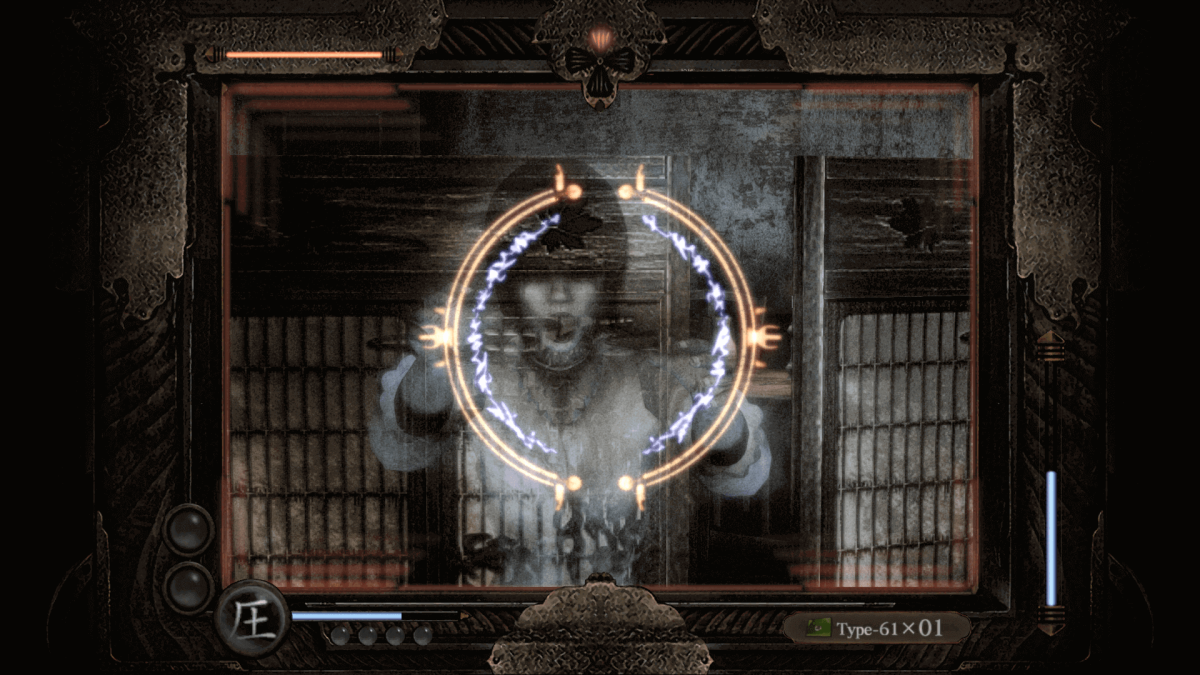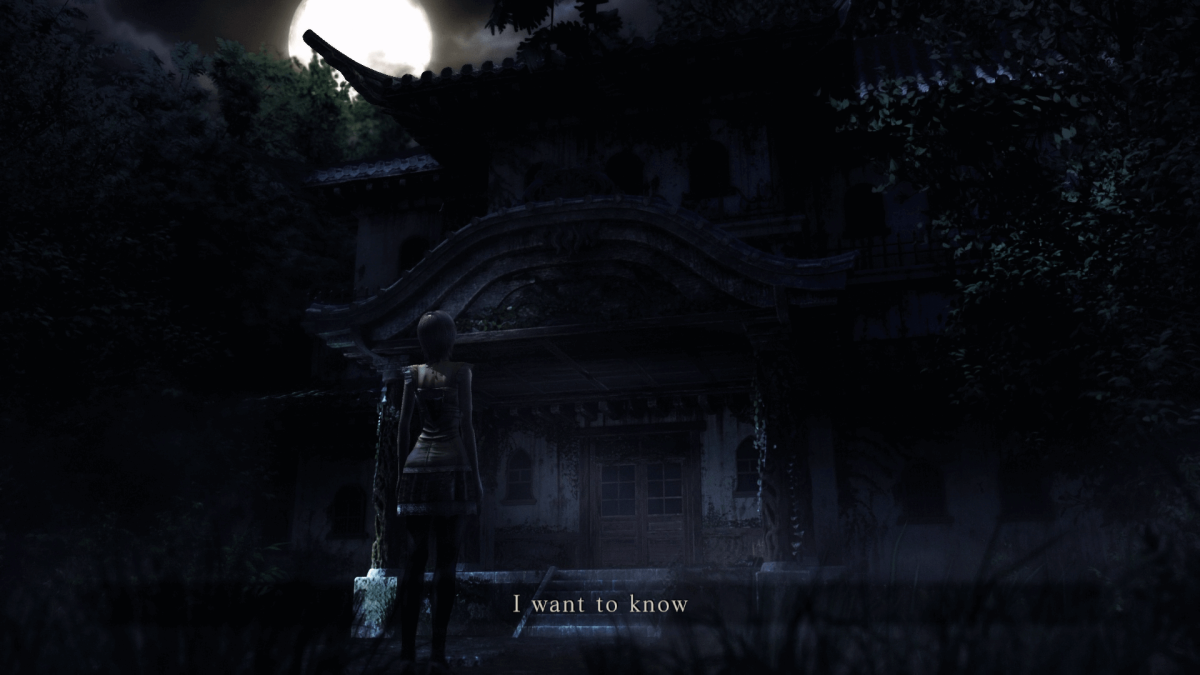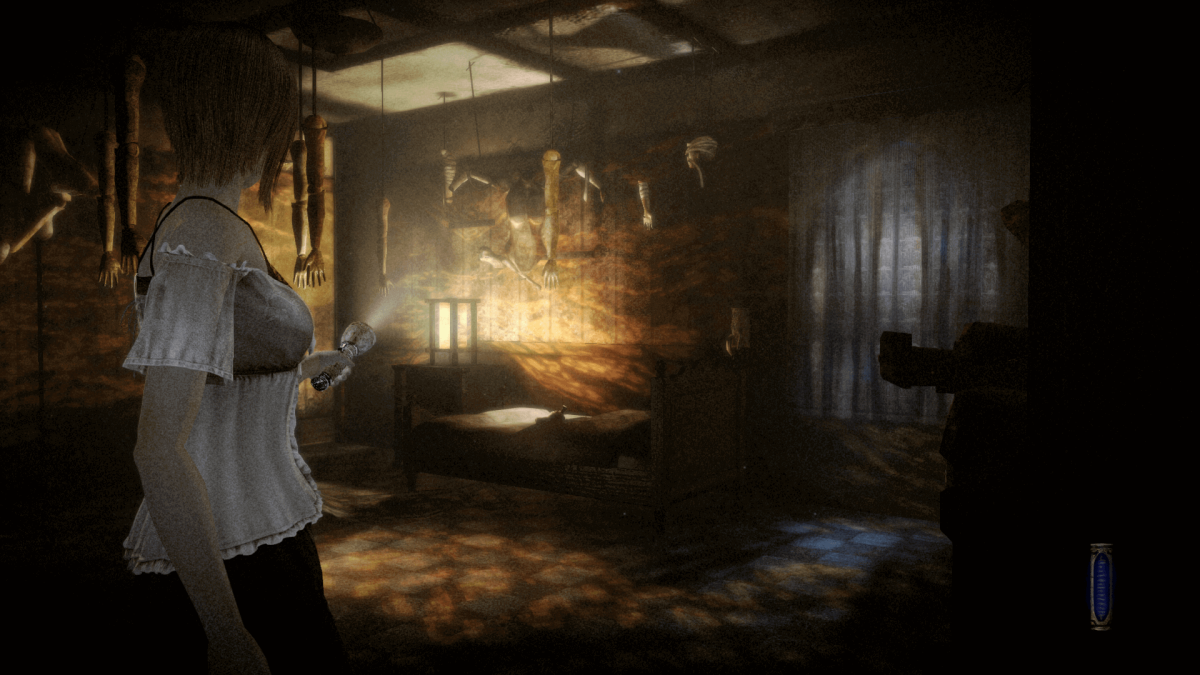While the Resident Evil 4 and Dead Space remakes takes up everyone’s time and money for their big expensive returns to generational statements, spare a thought for the boy in blue. 2008’s Fatal Frame: Mask of The Lunar Eclipse, notable for being the first Fatal Frame release on a Nintendo console, namely the Wii, it’s also the only Fatal Frame that didn’t get a Western release. Until now, that is. 15 years later, Koei Tecmo has tidied it up to give it the big remaster and port it deserves!
Besides being the fourth in the Fatal Frame series, Mask of The Lunar Eclipse is also noteworthy due to development being assisted by Grasshopper Manufacture, Suda51’s company, with Suda directing alongside Fatal Frame creator Makoto Shibata. Following the story of 3 individuals, Ruka Minazuki, Misaki Asou, and Choshiro Kirishima, all 3 are there to uncover the history behind the island, which mainly involves a once-in-a-decade ritual. After the last one failed in 1970, all of the island's inhabitants mysteriously die, with Ruka, Misaki, and Choshiro all trying to find out why.
It turns out to be a very complicated plot, even without 3 playable characters (4 if you count the short prologue), who you’ll switch between after each chapter, with all of them having different goals. Misaki eventually wishes to uncover the identity of a girl from her childhood, bringing along another girl from Rogetsu Isle, Madoka Tsukimori, for the ride. Ruka wishes to know her specific role within the ritual that her, Misaki, Madoka, and two other girls were involved in. Finally, Choshiro is there at the behest of Ruka's mother, Sayaka, while chasing someone who may be responsible for the girls' original involvement in the ritual.

As I said, there’s a lot going on, and despite my poor explanation, it all manages to coalesce into a cohesive structure, and one of genuine intrigue. The actual history of Rogetsu Isle, its inhabitants, and the murkier undertones of its more prominent establishments, is an unnerving joy to unfold and appreciate. As narratives go, it certainly succeeds in set-up and pay-off, but there are shortcomings in terms of how it approaches its characters.
Ruka’s arc is easily the most engrossing, and Choshiro’s role is a great side story, but Misaki’s, while enveloping, had a chance to be the best story in the franchise, let alone here. There’s a level of animosity that presets her friendship with the aforementioned Madoka, one of the other girls involved in the ritual. Madoka knows that her role as Misaki’s friend is one of begrudging acceptance, even when they were on Rogetsu Isle together. Unfortunately this conflict never fully excels, demoted to a footnote since the ritual plays a bigger part as time goes by.
If you’ve never played a Fatal Frame game before, gameplay involves using the “Camera Obscura”, the series’ mainstay item, to relinquish ghosts and spirits from the world of the living. Once they’re in your viewfinder, you have a battle system that deals more damage if you’re able to lock on for long enough, with that damage being expanded upon with various effects. There’s a lot of nuance and structure behind the combat, thanks to the use of different lenses that impede the ghosts further or cause massive damage quickly.

With it originally being a game to utilize Fatal Frame’s debut on a Wii, a lot of Mask of The Lunar Eclipse has the stench of an introduction. Despite this, the combat can work really well, the homely and realistic rooms becoming arenas with legitimate design in regards to how you navigate it when fighting ghosts. It gets muddied with Choshiro, who uses the “Spiritual Stone Flashlight” that doesn’t cap his movement when aiming, and ghosts will attack in hordes, lacking the same variety.
What makes a Fatal Frame game is still in here, just seemingly homogenized to its core concepts, whether it’s the exploration, the ghost hunting, or the horror itself. At the beginning, Mask of The Lunar Eclipse is front-loaded with aggressive linearity, signposting of the most alienating manner, and exceptionally cheap jumpscares. As time goes on, however, these basic concepts become creepier, more laser-focused on an experience akin to previous entries in the Fatal Frame series.
This is thanks to some absolutely stellar sound design, something that would be a cause for concern if you had played the original. Thanks to the Wiimote’s built-in speakers, certain moments in the game, like phone calls and the death rattle of defeated ghosts, would transpire through that speaker in a scratchy, illegible sound font. Even without that speaker, Mask of The Lunar Eclipse manages to sell the fear and feature some of the best sound design in a game this year, largely thanks to a blend of modernized narrative, and its analog aesthetic when compared to the rest of the series.

There are some elements that a simple port and remaster to other systems can’t iron out, however, namely the movement. The exploration mechanics could’ve used some actual fine-tuning alongside the control scheme, with items only being available to pick up if you’ve shone a flashlight in their general area. Beyond that, simply controlling the characters in some of the more claustrophobic areas can become frustrating, and getting in the exact right area to pick up an item is a hassle.
Despite this, it can still be incredibly easy, with mini-games and ghost encounters either becoming too simple to execute, or a cakewalk to defeat, respectively. On the Wii, Mask of The Lunar Eclipse would allow you to lock onto a ghost permanently, and with that changed to a specific lens you’d equip on the camera, the challenge has changed from “none” to “minimal”. Ghosts rarely take advantage of the intangibility they possess beyond rushing the player in the later stages, and the final boss is an absolute joke, regardless of which difficulty you play.

In fact, one could say that Mask of The Lunar Eclipse’s biggest problem is its lack of replayability. The game only has one ending, with a further playthrough only providing further saccharine context which you could argue isn’t necessary. The twists in the story are fantastic though, and thankfully, most of the bonus side content like outfits for the characters and lenses for the Camera Obscura is generously distributed across a sole playthrough.
Even with its shortcomings, Mask of The Lunar Eclipse was still an absorbing time that made me thankful for the experience I had. While not the best Fatal Frame in the series, it still has the hallmarks you’ve come to know and adore, as well as being a pretty good introduction for anyone looking to get into the series. It’s not the scariest Fatal Frame, nor the tightest, but it’s a Cliff Notes presentation of its strengths in short bursts, and finally releasing in the West is a blessing, no matter which way you picture it.
TechRaptor reviewed Fatal Frame: Mask of The Lunar Eclipse on Xbox One using a copy provided by the publisher. It is also available on Xbox Series S|X, PlayStation 4, PlayStation 5, Nintendo Switch, PC, and the Nintendo Wii.
Review Summary
Pros
- Some of the best sound design for a game this year
- Narratively engaging and impactful
- Combat still retains the core appeal of the series
- Exploration loop is never confusing
Cons
- Some ghost encounters are insultingly easy
- Movement controls are finicky more often than not
- Jumpscares are atrociously cheap
Have a tip, or want to point out something we missed? Leave a Comment or e-mail us at tips@techraptor.net








